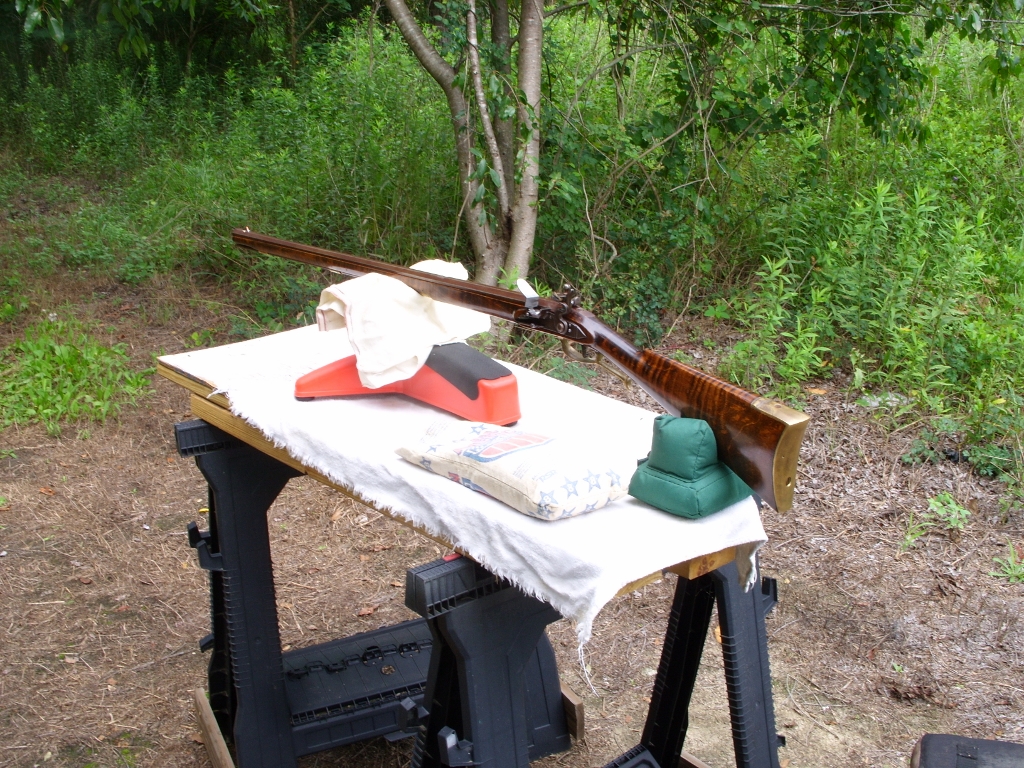Old post I know. But there is some good info in it and new shooters might benefit.
Some 20+ years ago I built this Isacc Haines from a TOW kit. It has a 38" Colrain .54 caliber barrel with round bottom rifling. A lefthand Large Siler from Jim Chambers, with the single trigger. The stock was a semi-fancy maple.
This rifle shot good from the start as it had no burrs or similar imperfections inside the barrel. I did do a few things I do I think enhances accuracy, and were planned to do during the building stage. Also I have done a lot of work tuning the trigger and the lock workings. I have a 2lb. smooth trigger pull, the entire lock is smooth and consistent. All factors which contribute to accuracy.
This group was shot during a test of these components. The barrel was swabbed and degreased prior to loading. There was no fouling shot taken. The lock was removed before loading and cleaned of any oil that might migrate to the touch hole.
First shot was with a clean bore, subsequent shots were fired with a dirty barrel.
Flint was knapped to sharp and not cleaned or touched up during shooting.
60 grains 3fg Goex. .530 round ball. .015 patch lubed with LeHigh valley patch lube.
To shoot consistent tight groups the shooter must be capable of shooting these tiny groups to start with. After all we are trying to shoot all shots into the same hole. In reality most shooters simply can't do it. It is much easier to blame the rifle for the shooters faults.
The shooting platform must be stable and free of vibrations at the shot. Before loading the rifle get into shooting position and aim at the target, center your sights on the bull, as carefully as possible squeeze off a shot. Without moving the rifle or your body check your sights. If you are still sighted on the bull your good to go. If not, work on your set up to tighten up your rest. Now repeat the shooting sequence until those sights never moves off the target.
When I shoot off a bench for my own testing I use a simple portable bench proven to not shift when a shot is fired. I use real sandbags. I never move off the bags, never use tree branches, limbs or other type rests. Do the same thing every time consistently.
I don't use 60 grains 3fg for deer hunting, the lightest load I've killed deer with was .070 grains 3fg, that season I killed an 8 point buck and 2 does. The balls exited all 3 deer into the ground beyond. With this rifle I load .075 grains of 3fg. My first shot is with .075 grains 3fg and a .018 pillow ticking patch lubed with Wonder Lube. Follow up shots are loaded with .075 3fg, a .018 pillow ticking patch an
Canola oil for lube. This loads faster and easier and shoots to the same POI as does the Wonder Lube.
My process is long established. I started hunting with BP and shooting Tournaments in 1996, and testing new ideas constantly.








